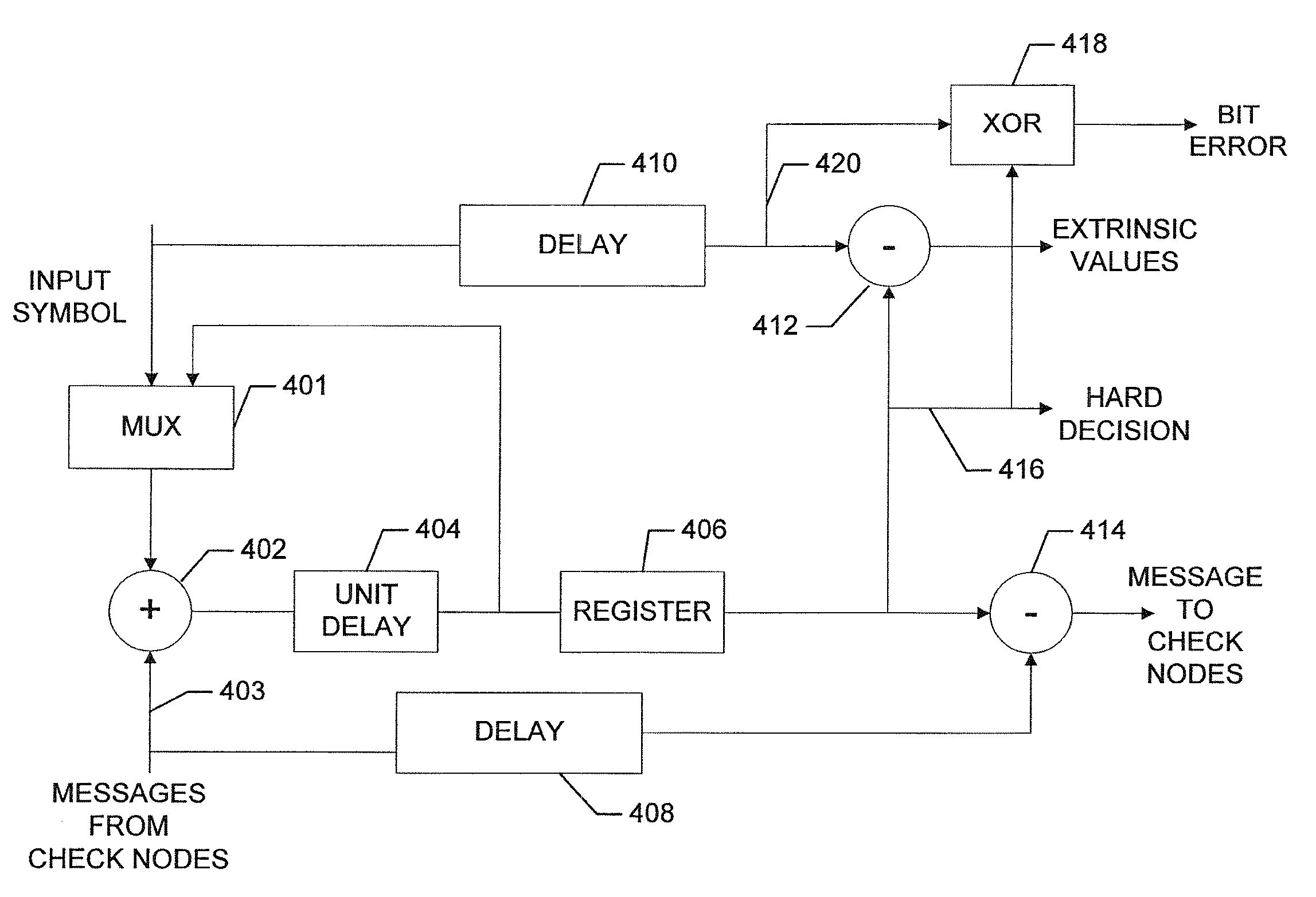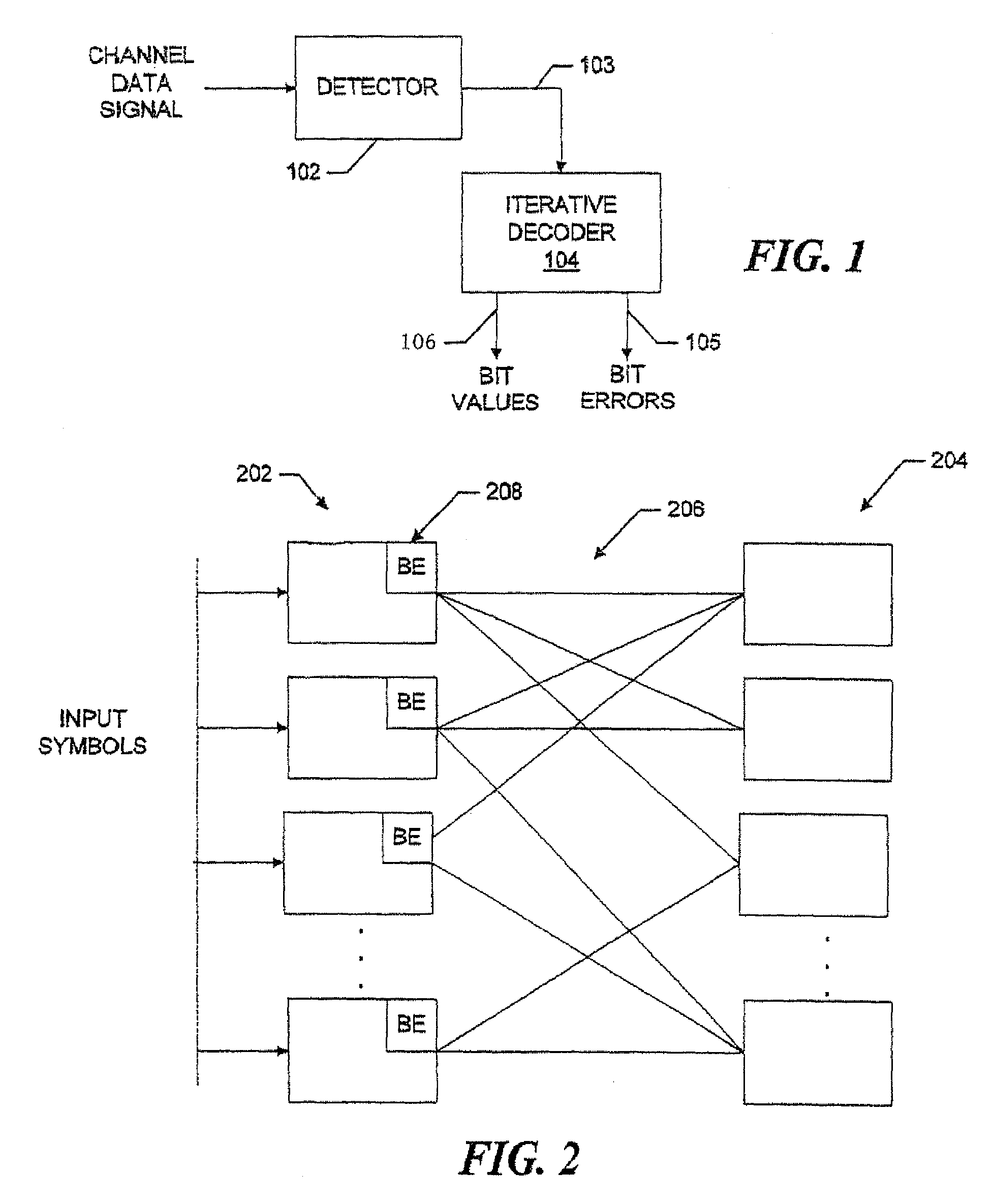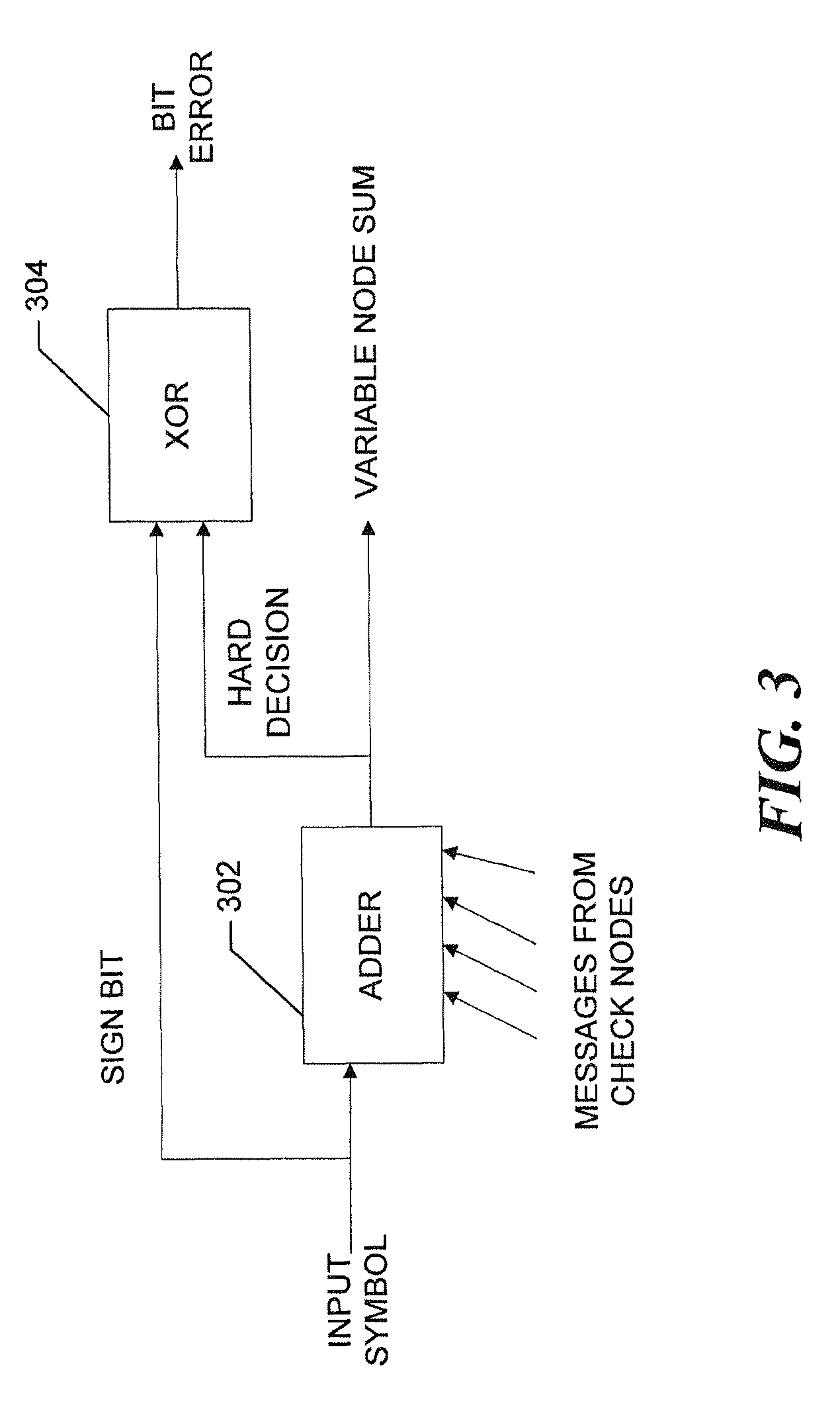Bit error detector for iterative ECC decoder
a decoder and error detector technology, applied in the field of iterative error correction code (ecc) decoders, can solve problems such as reluctance to adopt ldpc codes, data loss, and corruption of read-back signals
- Summary
- Abstract
- Description
- Claims
- Application Information
AI Technical Summary
Benefits of technology
Problems solved by technology
Method used
Image
Examples
Embodiment Construction
[0021]Referring to FIG. 1, a data signal from a channel is supplied to a channel detector 102, for example, an ISI detector. The detector operating in a known manner detects bits in the data signal and, for each bit, produces an input symbol that consists of a one-bit assigned value, or sign, and multiple bits of associated confidence information. The detector provides the input symbol on line 103 to an iterative decoder 104 which, in the example, is a low-density parity check (LDPC) decoder. The LDPC decoder, which is described in more detail below with reference to FIGS. 2-4, iteratively decodes the input symbols to produce associated hard decision bit values on line 106 and, on line 105, a performance metric that is the number of bit errors per block. Alternatively, the performance metric may be the number of symbols with errors, as discussed in more detail with reference to FIG. 6 below.
[0022]Referring now also to FIG. 2, the LDPC decoder 104 performs message-based iterative dec...
PUM
 Login to View More
Login to View More Abstract
Description
Claims
Application Information
 Login to View More
Login to View More - R&D
- Intellectual Property
- Life Sciences
- Materials
- Tech Scout
- Unparalleled Data Quality
- Higher Quality Content
- 60% Fewer Hallucinations
Browse by: Latest US Patents, China's latest patents, Technical Efficacy Thesaurus, Application Domain, Technology Topic, Popular Technical Reports.
© 2025 PatSnap. All rights reserved.Legal|Privacy policy|Modern Slavery Act Transparency Statement|Sitemap|About US| Contact US: help@patsnap.com



